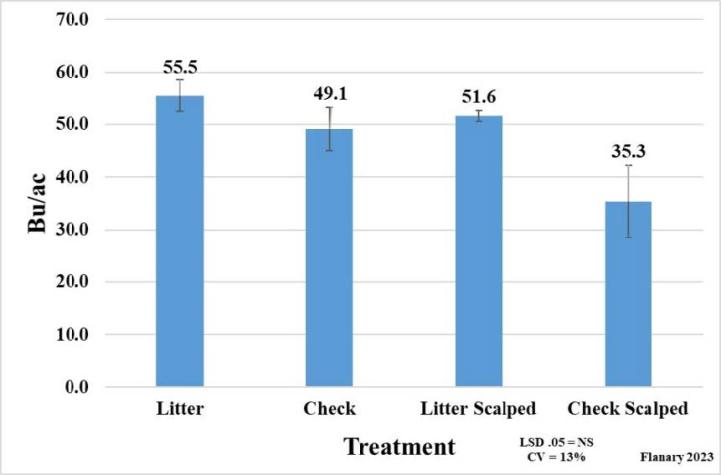ROCK PORT, Mo. – A six-year study at the University of Missouri’s Graves-Chapple Extension and Education Center in northwestern Missouri looked at the impact of poultry litter on soybean crops.
“Poultry litter is increasingly being applied to row crops in northwest Missouri,” said MU Extension agronomy specialist Wayne Flanary, who conducted the research. “Manures such as litter are valuable because they add organic matter and nitrogen, phosphorus and potassium nutrients.”
Ten tons of poultry litter was applied to each plot in the spring of 2018. The site had topsoil removed in places that needed to be leveled out. The chicken litter was lightly incorporated with a disk because the site was sloped. There were four replications of litter and the control check plots that were untreated. In the spring of 2023, phosphorus fertilizer was applied across all plots.
An analysis of the poultry litter showed it contained 60 pounds of nitrogen, 50 pounds of phosphate and 27 pounds of potash per ton.
In 2023, yields tended to be higher in the treated plots, but there was no statistically significant difference. The site has a lot of variability because scalping of topsoil was not removed to an equal depth, Flanary said.
The results were divided into little to no topsoil removal and severely scalped. Yields were 55.5 bushels per acre on the litter site 51.6 bushels per acre on the litter scalped site. The untreated sites had yields of 49.1 and 35.3 bushels per acre.
“Manure is a good management strategy to increase crop yields, especially in eroded soils and terrace channel cuts,” Flanary said.
Graph
Graph
Six-year yields for plots treated with chicken litter and untreated plots.
Writer: Julie Harker
